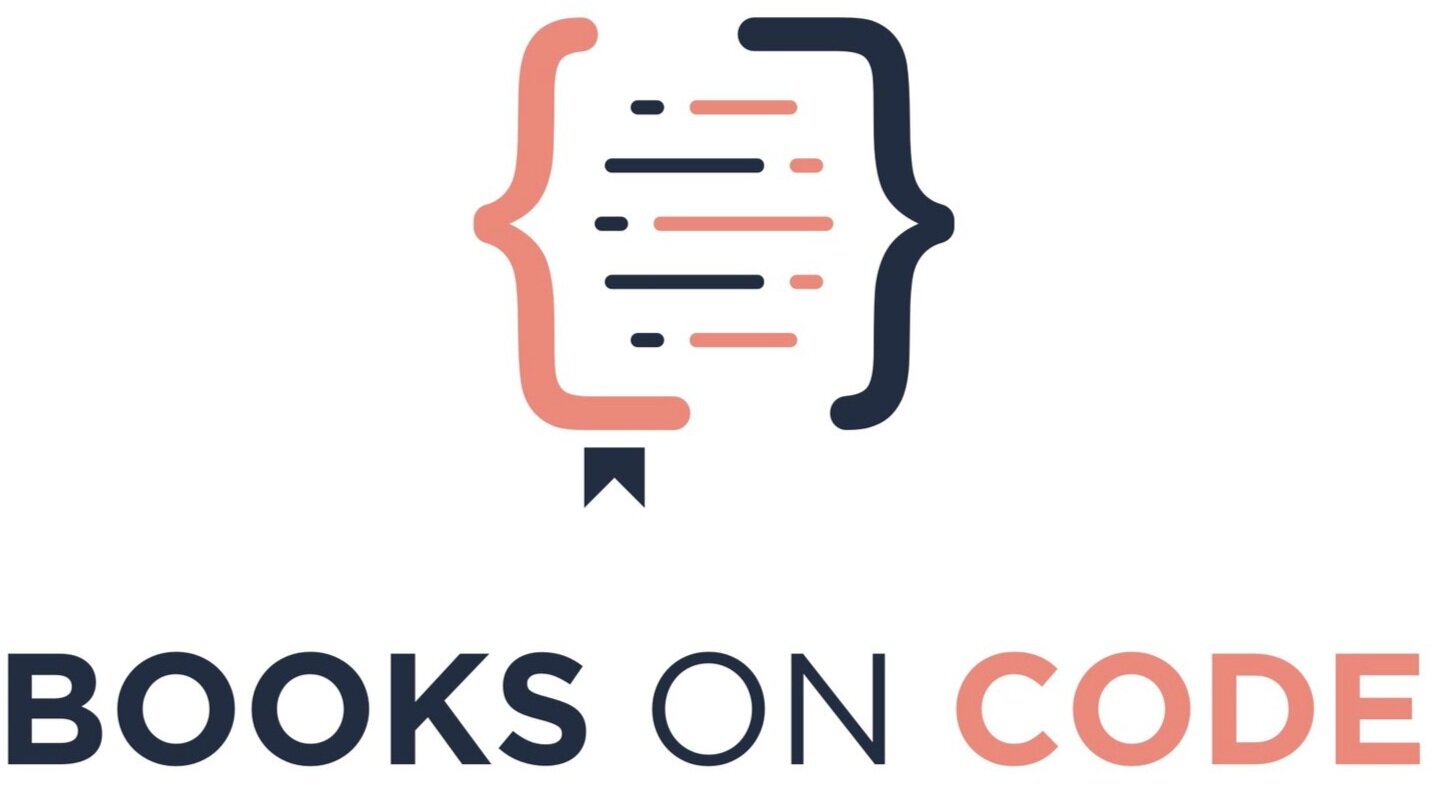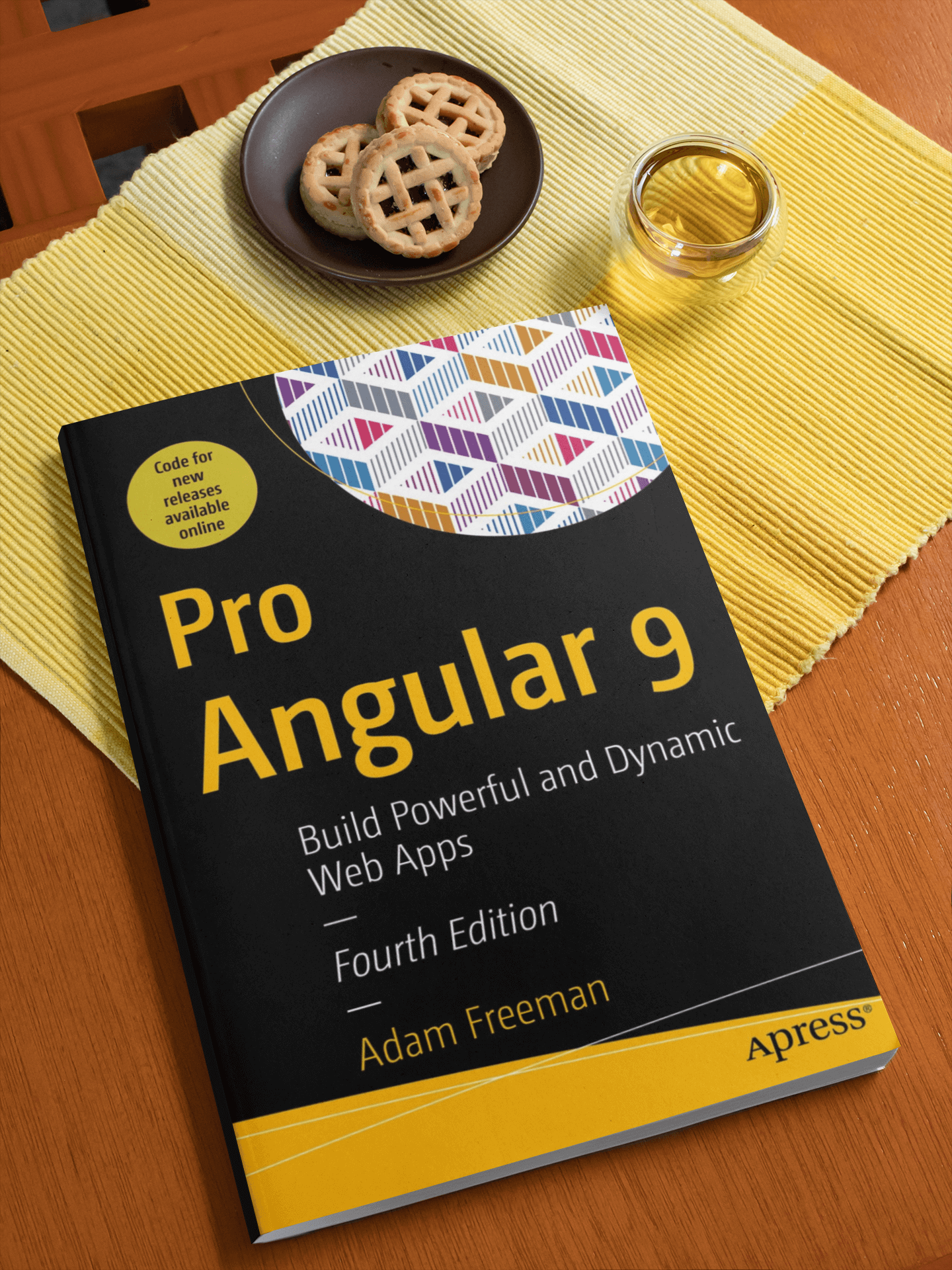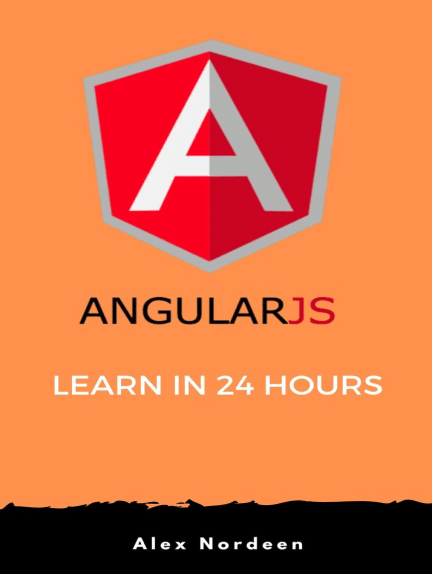5 Best AngularJS Books for a Modern 2023
Pro Angular 9 is a June 2020 release that teaches cutting-edge AngularJS concepts in Angular 9 and Angular 10.
The powerful JavaScript framework, AngularJS, or simply Angular, is one of the oldest frameworks among enterprises. It is a sophisticated platform with a steep learning curve. Learning Angular requires borrowing concepts and ideologies from Java.
It may seem tough to learn Angular but if you are interested to learn AngularJS, it would be a great idea to invest in one of the latest books on AngularJS. There are several outstanding books out there and choosing the right book is important as it can guide your learning.
In this article, we have compiled a list of best books for learning AngularJS through a collection of book reviews. Each book review will highlight the taste of the book, contents covered, and how it can benefit you.
What is AngularJS?
AngularJS separates its concerns using the MVC model. Separation of concerns means that data is decoupled from presentation and logic.
AngularJS is one of the most popular and most established open source, full-featured frameworks to develop dynamic apps. More structured and perhaps even more complicated than other modern frameworks like Vue and React, Angular is powerful. Knowing Angular can be a huge asset for employers.
The story of Angular started in 2009 as a project in Google to simplify web application development. AngularJS supports the separation of concerns by using the model-view-controller (MVC) design pattern. The built-in attributes (directives) of the framework makes for more dynamic web pages. Because of AngularJS separation of concerns, apps are easy to extend and customize.
The key features that make AngularJS one of the powerful frameworks in the market include MVC, Data model binding, and writing less code for DOM manipulation. Angular supports both Unit Testing and Integration Testing. It makes it easier to learn, develop, and scale web applications.
Best Books on AngularJS
Selecting the best books on AngularJS is like selecting the perfect coffee blend: it is challenging but rewarding.
At Books on Code, we consider ourselves experts on selecting the best programming books for the best learning.
The selections in this list are unique because they are all recent, up-to-date publications.
To help you in selecting a well-structured and latest book for learning AngularJS, we have narrowed it down to the top 5 best AngularJS books for 2020, all available for you to buy today. We have selected the latest books where content is focused on the latest changes and gives you the confidence to move forward.
Here are our criteria for selection of the books:
Use clear, precise, and easy-to-understand language
Thoroughly teach and explain the latest AngularJS concepts
Contain exercises, examples, and practice problems for hands-on experience
Enable to hold the attention of readers
Well-structured and friendly toward self-taught programmers
Here are the reviews on the five best and latest AngularJS books for beginners and advanced programmers.
Book 1: Learning Angular - Third Edition
Learning Angular - 3rd Edition by Aristeidis Bampakos and Pablo Deeleman was published in 2020 and is updated to Angular 10. This book covers new features and modern web development practices to address the current frontend web development landscape. This is a well-structures book for beginners who are looking forward to learning the framework needed to start developing Angular apps.
The book on Angular will teach you to develop apps by harnessing the power of the Angular command-line interface (CLI). You will learn to write unit tests, style your apps by following the Material Design guidelines, and finally deploy them to a hosting provider.
The book is simple to understand, well designed, and clearly written. It has four sections and thirteen chapters. The contents covered in each section are:
Section 1: Getting Started with Angular: This section teaches you to get started with Angular. You will learn how to build your first Angular app and introduce you to TypeScript.
Section 2: Components – the Basic Building Blocks of an Angular App: This section talks about component interaction and inter-communication. You will learn how to enhance components with pipes and directives It further talks about how to structure an Angular App and enriching components with Asynchronous Data Services.
Section 3: User Experience and Testability: This section talks about user experience and testability and covers the following areas:
Navigate through Components with Routing
Orchestrating Validation Experiences in Forms
Introduction to Angular Material
Giving Motion to Components with Animations
Unit test an Angular App
Section 4: Deployment and Practice: This section talks about deployment and practice. You will learn about bringing an Angular App to production and developing a real-world Angular app.
By the end of this book, you will gain a practical understanding of how to create Angular applications with TypeScript from scratch but also enhance your coding skills with best practices.
Book 2: Learn AngularJS in 24 Hours
Learn AngularJS in 24 Hours by Alex Nordeen was published in March 2020 and is your ultimate getting-started guide to AngularJS or AngularJS 2 Programming. This book is suitable for beginners and will help you to learn and harness the power of the AngularJS framework right away.
Oddly enough, this book cannot be found at Amazon, but at Google, Kobo, and Barnes & Noble.
The book covers all fundamentals of Angular JS like Routes, Modules, Directives, Expressions, Dependency Injection, and many more. The book is well designed and clearly written and makes Angular JS easier, simpler, and more interesting. As you go through the book, you will find images and examples that illustrate each concept of Angular JS.
The book is divided into 23 chapters and the contents covered in these chapters are:
Chapter 1 covers the introduction of AngularJS, its features, architecture, and AngularJS advantages
Chapter 2 covers ‘Hello World’
Chapter 3 talks about Controller. It explains what Controller does from Angular's perspective, how to build a basic Controller, how to define Methods in Controller using ng-controller in External Files
Chapter 4 talks about the scope in AngularJS
Chapter 5 covers the ng-repeat Directive
Chapter 6 talks about ng-model Attribute and how to use "ng-model"
Chapter 7 covers the ng-view Directive in AngularJS along with the ng-view example
Chapter 8 covers Expressions. It explains AngularJS Expressions with an example, AngularJS numbers, AngularJS Strings, AngularJS Objects, AngularJS Arrays, and AngularJS Expression capabilities and limitations
Chapter 9 covers Filter including Lowercase, Uppercase, Number, Currency, JSON
Chapter 10 covers Custom Filter
Chapter 11 covers Directive
Chapter 12 covers Custom Directive. It explains how to create a custom directive, AngularJs Directives and Scopes using controllers with directives, how to create reusable directives, AngularJS directives and components, and handling events in a directive
Chapter 13 talks about how to create a module in AngularJS Modules and Controllers
Chapter 14 covers Events
Chapter 15 covers routing with parameters adding an Angular route. It also talks about creating a default route, accessing parameters from the route, using Angular route service, and enabling HTML5 routing
Chapter 16 covers AJAX Call high-level interactions with servers using resource, low-level server interactions with HTTP, fetching data from a server, running SQL and MySQL
Chapter 17 covers Table and explains hot to populate & display data in a table, AngularJS in-built filter, sort table, display Table with uppercase filter, display the table index
Chapter 18 covers Form Validation. It talks about form validation using HTML5, form validation using dirty, valid, invalid, and pristine, form validation using AngularJS, auto validate user feedbacks with Ladda buttons
Chapter 19 covers form submit
Chapter 20 covers ng-include, client-side includes, server-side Includes, how to include HTML file in AngularJS
Chapter 21 covers the Dependency Injection. It explains which component can be injected as a dependency in AngularJS and example of dependency injection
Chapter 22 covers Karma Jasmine introduction & installation of the Karma framework, Testing AngularJS Controllers, Testing AngularJS Directives, end to end testing of AngularJS
Chapter 23 covers Protractor Testing.
This book is brief and can be completed in a single day. Learn AngularJS in 24 Hours saves your precious time while contents will make you stay focused without getting bored!
Book 3: Pro Angular 9: Build Powerful and Dynamic Web Apps
Pro Angular 9: Build Powerful and Dynamic Web Apps by Adam Freeman is published in June 2020. It covers all the latest concepts of Angular 9 and Angular 10. This book is for web developers who have prior knowledge of JavaScript and HTML. It is written in a clear and concise writing style accompanied by project-driven real-world examples.
The book serves as an in-depth, concise, and comprehensive guide that will enable you to build your dynamic JavaScript applications. The book opens with a detailed overview of the MVC pattern and presents the range of benefits it can offer. The reader will learn how to use Angular in their projects, starting with the basic concepts, and making its way to more advanced and sophisticated features.
As you go through the book, you will be able to:
Gain a solid architectural understanding of the MVC pattern
Create rich and dynamic web app clients using AngularJS
Use the ng-tools to create and build an Angular project
Extend and customize Angular
Acquire skills to unit test your Angular projects
If you’re someone who likes to learn by doing, then this book is for you! This book has technical depth and is ideal for web developers who want to create rich client-side applications. The reader will have access to accompanying online files for Angular 9 and Angular 10. The book examples work perfectly without changes in Angular 10.
You may also be interested in these books:
Book 4: Angular for Enterprise-Ready Web Applications - Second Edition
Angular for Enterprise-Ready Web Applications - Second Edition by Doguhan Uluca was published in May 2020. This edition is updated with in-depth coverage of the evergreen Angular platform. The readers will find updated examples, projects, and explore a powerful solution for NgRX and Ivy, automated testing, and Firebase authentication.
Through this book, you will learn to:
Adopt a minimalist, value-first approach to delivering web apps
Master Angular development fundamentals, RxJS, CLI tools, GitHub, and Docker
Discover the flux pattern and NgRx
Implement a RESTful APIs using Node.js, Express.js, and MongoDB
Create secure and efficient web apps for any cloud provider or your own servers
Deploy your app on highly available cloud infrastructure using DevOps, CircleCI, and AWS
The contents of this book are in-depth and well-constructed. The reader will start by mastering Angular programming fundamentals. The book talks about using the Kanban method and GitHub tools to build outstanding apps with Angular Material. The reader will also leverage reactive programming patterns with RxJS, discover the flux pattern with NgRx, become familiar with automated testing, utilize continuous integration using CircleCI, and deploy your app to the cloud using Vercel Now and GCloud.
The book has 18 chapters and covers the following concepts:
Introduction to Angular and Its Concepts
Setting Up Your Development Environment
Creating a Basic Angular App
Automated Testing, CI, and Release to Production
Delivering High-Quality UX with Material
Forms, Observables, and Subjects
Creating a Router-First Line-of-Business App
Designing Authentication and Authorization
DevOps Using Docker
RESTful APIs and Full-Stack Implementation
Recipes – Reusability, Routing, and Caching
Recipes – Master/Detail, Data Tables, and NgRx
Highly Available Cloud Infrastructure on AWS
Google Analytics and Advanced Cloud Ops
Index
This comprehensive book takes the reader step-by-step through each stage of a new project. By the end of the book, you will be familiar with the entire scope of the latest web development and full-stack architecture, learning patterns, and practices to be a successful web developer.
Doguhan Uluca has packed the book with lots of informative tips along the way. This book is for developers with prior experience with RESTful APIs. If you want to learn how to write perfect AngularJS applications in 2020, then this book is for you!
Book 5: Beginning Angular with Typescript (updated to Angular 9)
Beginning Angular with Typescript (updated to Angular 9) by Greg Lim was published in April 2020. You will explore Angular 9 from a web development point of view in a fun and hands-on approach. This is a fast-paced book with every section written in a well-structured and a bite-sized manner.
This book is a practical guide that aims to help you learn how to use Angular 9 and experience the joy of building full-fledged applications. This book is for developers with a basic understanding of HTML, CSS, Javascript, and object-oriented programming. No prior experience in TypeScript or AngularJS is required.
There are 14 chapters in this book covering the following content:
Introduction
Creating and Using Components
Bindings
Working with Components
Conditional Rendering, Pipes, and Ng-Content
Template Driven Forms
Model-Driven Forms
Introduction to Observables
Getting Data From RESTful APIs with Observables
Routing
Structuring Large Apps With Modules
C.R.U.D. with Firebase
Authentication with Firebase
Each topic is covered clearly and concisely and is packed with the details you need to learn to be truly effective. By the end of the book, you will be ready to use Angular for your applications.
More Ways to Learn Angular
By now, you must have a good idea of the essential things to look for when considering the latest and best book for AngularJS. With that information, you’re now better equipped to find the right book to match your needs. Use our picks as a guide as it’s never too late to learn AngularJS!
Beyond the books, you can increase your immersion with differences of kind: interactive or video courses.
Here are some other ways to learn:
Coursera: I took a course to learn AngularJS and I am a die-hard fan of it to this day. The instructor is hilarious and light-hearted and the university has one of the best reputations. If you’re looking to go beyond the books, I recommend taking Single Page Web Applications with AngularJS at Coursera.
Codecademy: You can get a free introduction to Angular concepts with the interactive course, Learn AngularJS 1.X. It is clear that this course is older and does not include the latest features, so it’s important to conduct further research after completing the course. For more on Codecademy Pro, see my Codecademy Pro review.
Udemy: Angular - The Complete Guide (2021 Edition) has over 60,000 five-star reviews and offers over 30 hours of video content for a thorough walkthrough.
And lastly, if you’re interested in taking your front-end development skills to the next level, you may be interested in these top TypeScript books. We have also compiled over 70 top learning resources to keep you curious. I look forward to seeing you in those articles. 👋 😊








